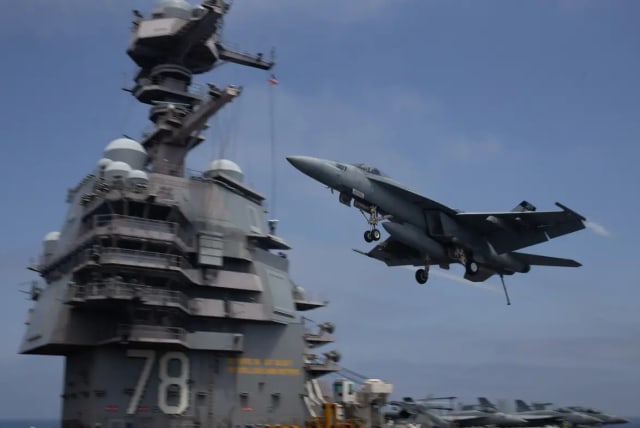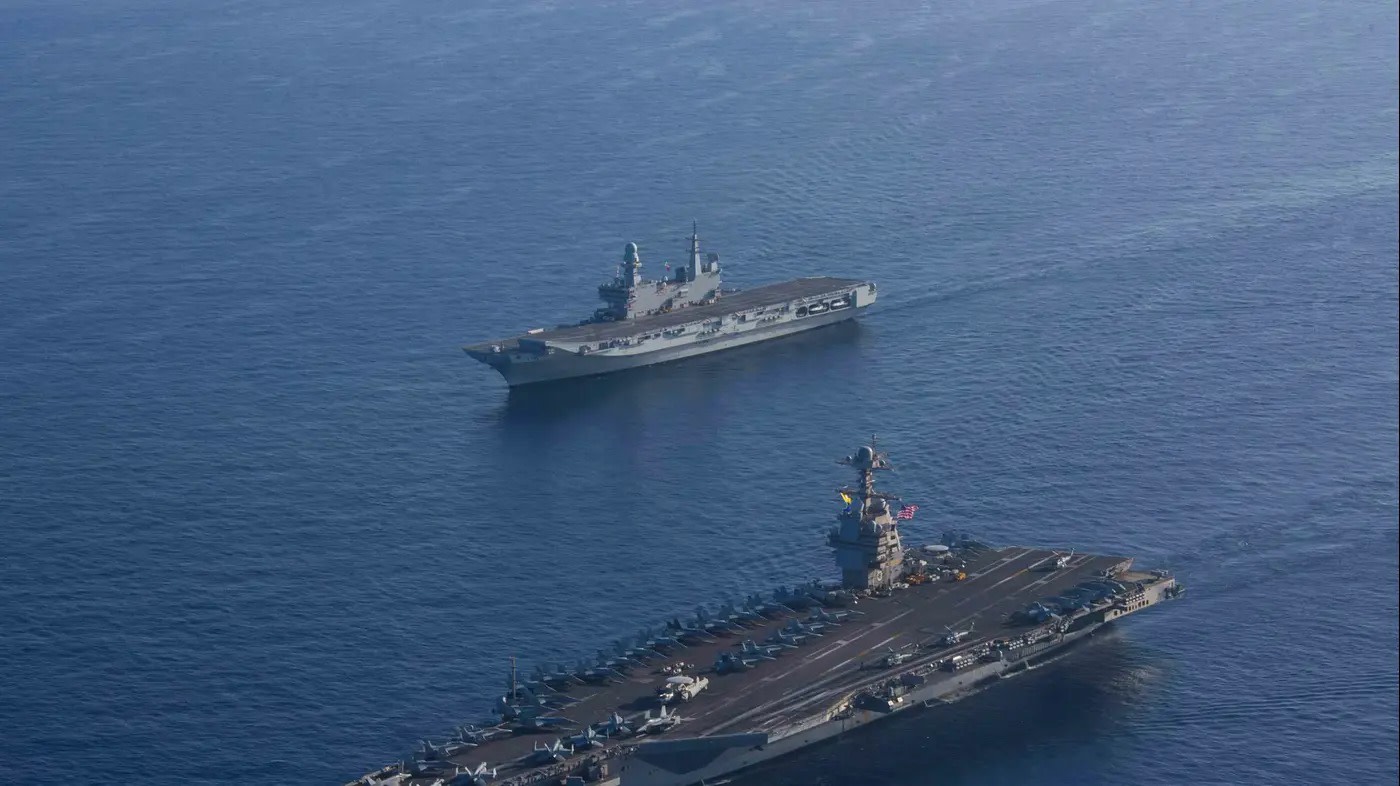Gerald Ford Carrier: Inside the nuclear marvel bound for Israel

America's latest and priciest aircraft carrier heads to the Eastern Mediterranean. Discover the crew's lifestyle, dining menu, and its cutting-edge armament.
During the mid-1970s, a major crisis in Israel-US relations emerged when then-US President Gerald Ford announced a "re-evaluation" of their ties following unsuccessful negotiations with Egypt post-Yom Kippur War.
Contrastingly, today the aircraft carrier bearing his name navigates the Eastern Mediterranean, reflecting the robust US-Israel relationship under President Joe Biden. This move emphasizes the US's backing of Israel during a significant crisis, similar to 1973, and serves as a caution to Iran and Hezbollah concerning potential conflict with Gaza.
The USS Gerald Ford possesses the capability to independently launch strikes on Lebanon, Syria, or Iran. It is supported by US Air Force refueling planes from the Emirates and sails with a battle group of five destroyers.
This aircraft carrier is the latest, largest, and most formidable addition to the US Navy's nuclear carrier fleet. But its grandeur also recalls certain challenges in the American security apparatus. Despite anticipated savings, the Ford's construction exceeded $13 billion, excluding aircraft and helicopters. Its daily operational cost is around $7 million. The ship took five years post-completion to become fully operational due to various setbacks.
Specifications:
The Ford, spanning 333 meters in length and 78 meters in width, is the first completely new US aircraft carrier in four decades. It's designed with enhancements to reduce radar signature and boost efficiency. Notably, its aircraft launching system is electrically powered, replacing the traditional steam mechanism.It houses two nuclear reactors that together produce 600 kilowatts, comparable to an Israel Electric Company power plant.
Aircraft:
The Ford primarily operates semi-stealth F-18 E/F planes, with four squadrons onboard. Additionally, it has electronic warfare F-18 Growlers, Seahawk helicopters, Hawkeye airborne early warning aircraft, and Greyhound transport planes.
Defense:
The Ford is equipped with anti-aircraft and anti-missile systems, Phalanx machine guns, and a close-in defense anti-ship machine gun system. Its accompanying destroyers provide additional missile defense.Nuclear Capabilities:
While the US doesn't publicly disclose nuclear weapon presence on carriers, the aircraft on the Ford are designed to carry and launch atomic bombs, along with traditional weaponry.
Crew:
The Ford is operated by 4,539 personnel, fewer than the Nimitz-class carriers. Among the crew is Sage, a Labrador service dog, who adds some leisure on the ship.
Life on Board:
Contrary to Hollywood depictions, life on an aircraft carrier is demanding. The Ford partakes in six-month deployments, with rare opportunities for crew members to return home. Their rigorous duties are balanced by improved living conditions and amenities, including a supermarket, laundry facilities, and a gym.A key feature is the ship's culinary commitment. About 93 crew members cater to the dining needs, operating from 6 am to midnight. They serve diverse dishes, with themed days like taco and pizza days.
Jerusalem Post Store
`; document.getElementById("linkPremium").innerHTML = cont; var divWithLink = document.getElementById("premium-link"); if (divWithLink !== null && divWithLink !== 'undefined') { divWithLink.style.border = "solid 1px #cb0f3e"; divWithLink.style.textAlign = "center"; divWithLink.style.marginBottom = "15px"; divWithLink.style.marginTop = "15px"; divWithLink.style.width = "100%"; divWithLink.style.backgroundColor = "#122952"; divWithLink.style.color = "#ffffff"; divWithLink.style.lineHeight = "1.5"; } } (function (v, i) { });

